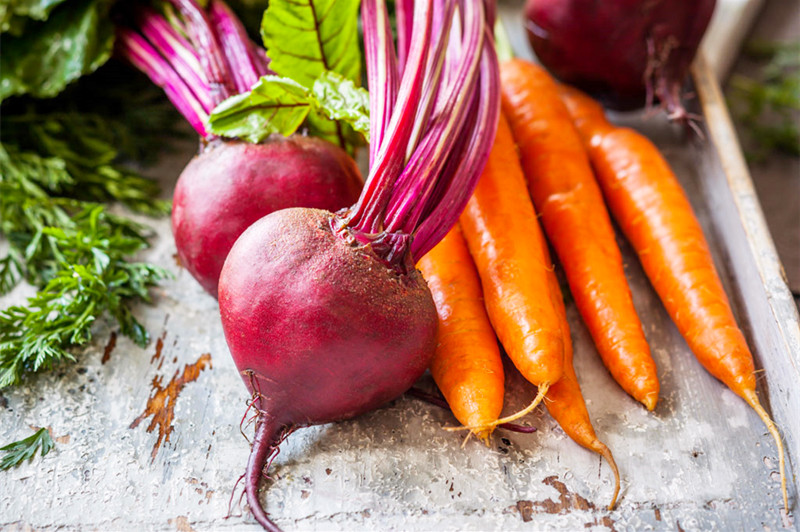Food coloring can be divided into natural food coloring and chemical food coloring. The chemical pigments are made from synthetic chemical materials, alternatively, natural pigments refer to coloring substances obtained from the plants, animals and fermentation of microorganisms, mostly anthocyanins, flavonoids, carrots and other compounds. With the extraction technology and people’s pursuit of natural and healthy biological psychological needs, the consumption of natural pigments is becoming popular.
However, natural food pigment has a fatal disadvantage, that is, poor stability, and its sensitivity to light, heat or enzyme bacteria. According to its raw materials, uses, and preparations, extraction methods of natural plant pigments can be solvent extraction, boiling, pressing, crushing, enzyme reaction, supercritical extraction, etc. The different natural plant species and harvesting sites need different extraction and purification processes to produce pigments. The following table shows several commonly used methods for extracting pigments:
| Methods | Pros | Cons |
| Solvent extraction | Wide uses. Simple operation, low cost, high extraction rate | Long extraction time, unstable quality, solvent residue, low purity |
| Enzyme extraction | High efficiency, can be operated at room temperature | Limited by Enzyme preparations |
| Supercritical fluid extraction | High extraction rate, high purity, simple process, non-toxic | High Equipment cost |
| Microwave extraction | High extraction rate, short extraction time and less solvent | High requirements and limited application |
| Molecular distillation | Low temperature and pressure while high separation | High equipment cost, high design requirements |
Table of Contents
ToggleSolvent extraction
Solvent extraction is one of the most commonly used methods to extract pigments from plants and animals, including impregnation, infiltration, decocting and reflux extraction. The impregnation method and decocting method is operated /with water as a solvent, suitable for the active ingredients can be dissolved in water, are stable to humidity, heat and not volatile raw materials. The reflux extraction method will collect natural pigment plant raw materials through sorting, washing, drying, and then crushed by the grinder in an organic solvent, centrifugal separation, concentration, drying, refining.
Enzyme reaction method
Through enzyme reaction or digestion of cell wall with appropriate enzymes, extract pigment such as yellow pigment extracted from gardenia fruit, through enzyme treatment to produce gardenia blue pigment, gardenia red pigment in food processing.
Supercritical extraction
Supercritical fluid (SF) is a fluid above the critical temperature (Tc) and pressure (Pc), between gas and liquid. Supercritical fluid has a strong penetration force similar to gas and a large density and solubility similar to liquid and has good solvent characteristics, which makes it a good extractant. Supercritical fluid extraction (SFE), is to uses strong solubility properties of supercritical fluid, various effective ingredients extracted from plant and animal products, and then through the decompression process of its release, studies show that the leaching rate and the natural pigment is several times of conventional method to extract the product has high purity, less solvent residue, non-toxic side effects, etc. According to the patent report, astaxanthin was extracted from shrimp shells by supercritical CO2 with a concentration of 8.331%.
Microwave extraction
Microwave extraction is a method in which samples and organic solvents are heated by microwave in a closed container, and the components to be measured are extracted from the sample matrix. It is evolved from the combination of acid nitration samples in a closed container and liquid-solid extraction of organic compounds. It can complete the extraction of a variety of sample components in a short time. Microwave extraction with less solvent and good reproducibility overcomes the defects of supercritical extraction and solvent extraction, with low cost and environmental friendliness.
Molecular distillation technique
Molecular distillation is a special liquid-liquid separation technology, it is based on the difference of the average free path of molecular movement of different substances in high vacuum, and it can be separated at a temperature far lower than the boiling point of substances at normal pressure. The technology has the characteristics of low distillation temperature, low pressure, high separation degree, short heating time and so on, can greatly reduce the separation cost of high boiling point materials, excellent protection of the quality of heat-sensitive materials, and truly maintain the pure natural characteristics. The results showed that the carotenoids extracted from dewaxed sweet orange oil by molecular distillation in one step did not contain an organic solvent, and had high purity and high color value.



